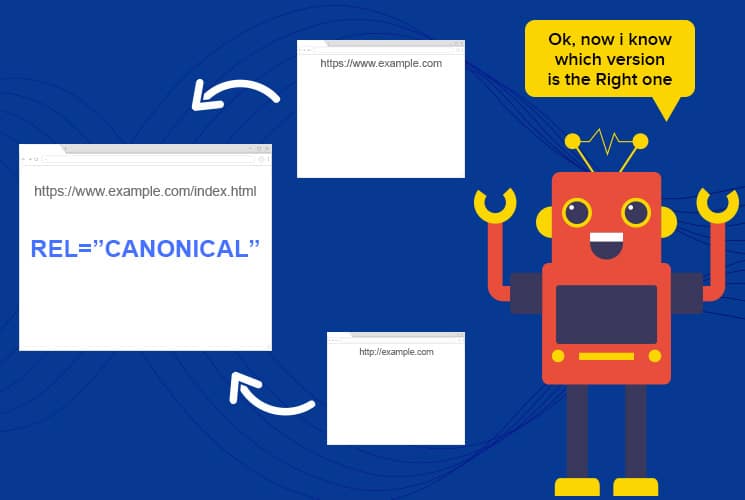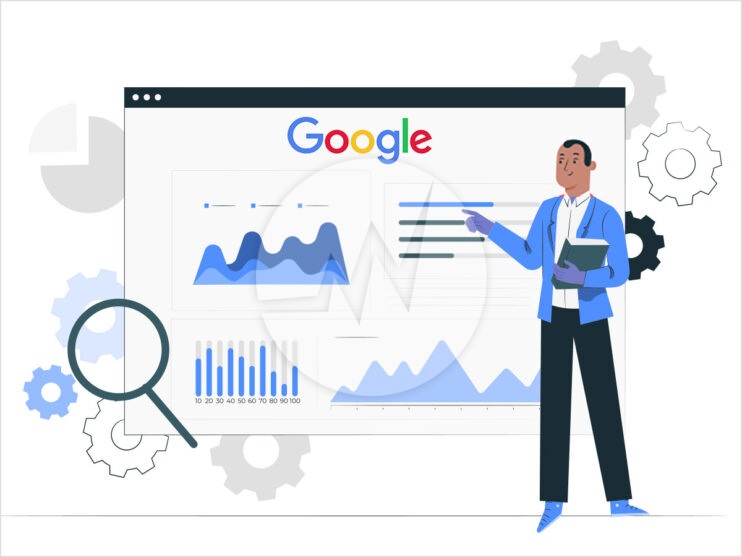Importance of Canonical Tags in Ecommerce Store SEO!

Canonical tags are the whole and sole for any website search engine optimization for any issues regarding content duplication. Probably the best part of the decade, thanks to Google, Microsoft, and Yahoo! There are loads and loads of URLs out there. In case if a customer misses a single alphabet, an ecommerce store may face issues like duplicate content search penalties, sales reduction and the list goes on.
For e.g., Look at the following URLs:
www.example.com
example.com
http://example.com
http://example.com/
https://example.com
https://www.example.com
http://www.example.com
https://www.example.com/index.html
Do they look same to you?
Yes, you are right! The URLs look similar; But search engine bots consider these as different URLs!
The same issue applies to URL parameters generated for tracking purposes as well:
https://www.example.com/?utm_source=google&utm_campaign=shopping
They might deal with similar content and hence can easily mislead any customer & consider this as a duplicate content. Search Engine Optimization for an Ecommerce Store is like having an accurate address of your shop on Google Maps; one wrong turn and snap, you end up nowhere or somewhere you did not want to. Any which way the eCommerce store owner has to face it.
Ecommerce Store SEO is the keywords entered by customers that best suits their search and hence provide the perfect internet shopping experience. The store lost its customer with a risk of getting sued for content duplication. This is where Canonical Tags in SEO and Canonical URLs in SEO play an important role.
Online stores gain attention and tremendous sales based on various factors. Some online stores also avail Ecommerce Marketing Services to boost sales. Albeit this is a tough job because most of them deal with similar content and products. Canonical tags help you separate from this rat race and stand out for best ranking when Google segregates them. The penalty is not an actual problem here, just in case your content matches; it is just that no one likes extra working hours including Google! And you better get enlightened on what happens when the rankings of your page catch a downfall.
So how does all of this work?
The basic job of a Canonical Tag is to resolve content duplication and lead the search engines to capture pages that rank better. All of these somehow revolve around Search Engine Optimization and hence comes the role of Canonical Tags in SEO. As mentioned above, your customer misses an alphabet and whoop! You lost him. So why miss a chance just for the sake of duplication? Also, why mess with Google which at the end of the day would lead you at the bottom of the rankings? Long story short, you can directly convey Google to check a particular page and not its twin. Giving more job to it may get you jobless. If not properly addressed, the SEO vulnerability and a pile of different URLs can create more and more havoc. Everywhere you go, a duplicate URL follows. To save us from all of these, there is a host or a parent URL called Canonical URL.

Canonical tags for an ecommerce solution
By now it would be pretty clear to you on how this system works and what are the areas to tackle. Canonical tags are of great importance for anyone who wishes to stand tall in the online business. Take an example of any famous online store. Now imagine the case of duplication as discussed earlier. Like there is a similar website or URL with a small difference in the domain. That small change may lead customers of an eCommerce website to something random and ultimately lose their interest. No one sets a goal so complicated. The best ecommerce practice can overcome this issue by setting up few pages with rel=”canonical” tags.
As a prerequisite, the following things should be implemented first:
- Category pages with pagination
- Blog/Article/Product Tags pages
- One Product, Multiple Category
- Layered Navigation with filter or sorting
- URLs with search parameters
- CMS Pages (Informational)
Content Duplication & SERPs
A parent tag is the only solution to duplication. That is why we have SERPs (Search Engine Result Pages). By being specific on the canonical tag, you are showing Google the correct path towards the page/website that you wish to give utter value. For this, your page shall consist of the exact keywords to rank at the top.
To guide someone towards the accurate destination and tackle the perfect keyword or SEO, you need to be well versed with the usage of canonical tags. You won’t be master of it all in a day. It is ongoing learning and earning process.
Now the question that arises is, why am I not ranked even after working on the canonical tags and Search Engine Optimization part of my online store? This is where you need to peep at the neighbours. Competitors or perhaps someone who has reached far on what you just started.
Keeping up with the competitors!
How do you know the changes required on whatever you are doing? By comparing it with the best, right? Only when you see your friend earns more, you understand or invest time on enhancing your skills at work! Similarly, how do you know if your eCommerce store is missing on something? Simple. You check on how the competitors are doing it. Always keep a close eye on how they work when it comes to canonical tags or what makes it to the point when it comes to optimization? Begin with the keywords. See what keywords they tackle to gain maximum attention and minimum duplication at the same time. Remember, no duplication! And hence don’t go for the exact keywords but something different and of higher ranking.
Also, check how and what strategies the competitors are using in terms of canonical tags. What makes them unique? How come their customers are not directed to anything irrelevant or misleading? Once this is clear then comes the implementation part. Can you apply the same to your online store, to your procedures and especially to your canonical tag? Keep a track of everything. A record on the keywords used for various products or URLs created will be of great value.
P.S – You can check if there is a content duplication on canonical URL checkers available. It will also help you know how to attract the search crawlers. Thank us later!
If you are looking for effective search engine optimization, online marketing, digital marketing, social media marketing, content marketing strategies, search engine optimization services, digital marketing services, PPC campaign management services and more, Please explore our SEO services!






